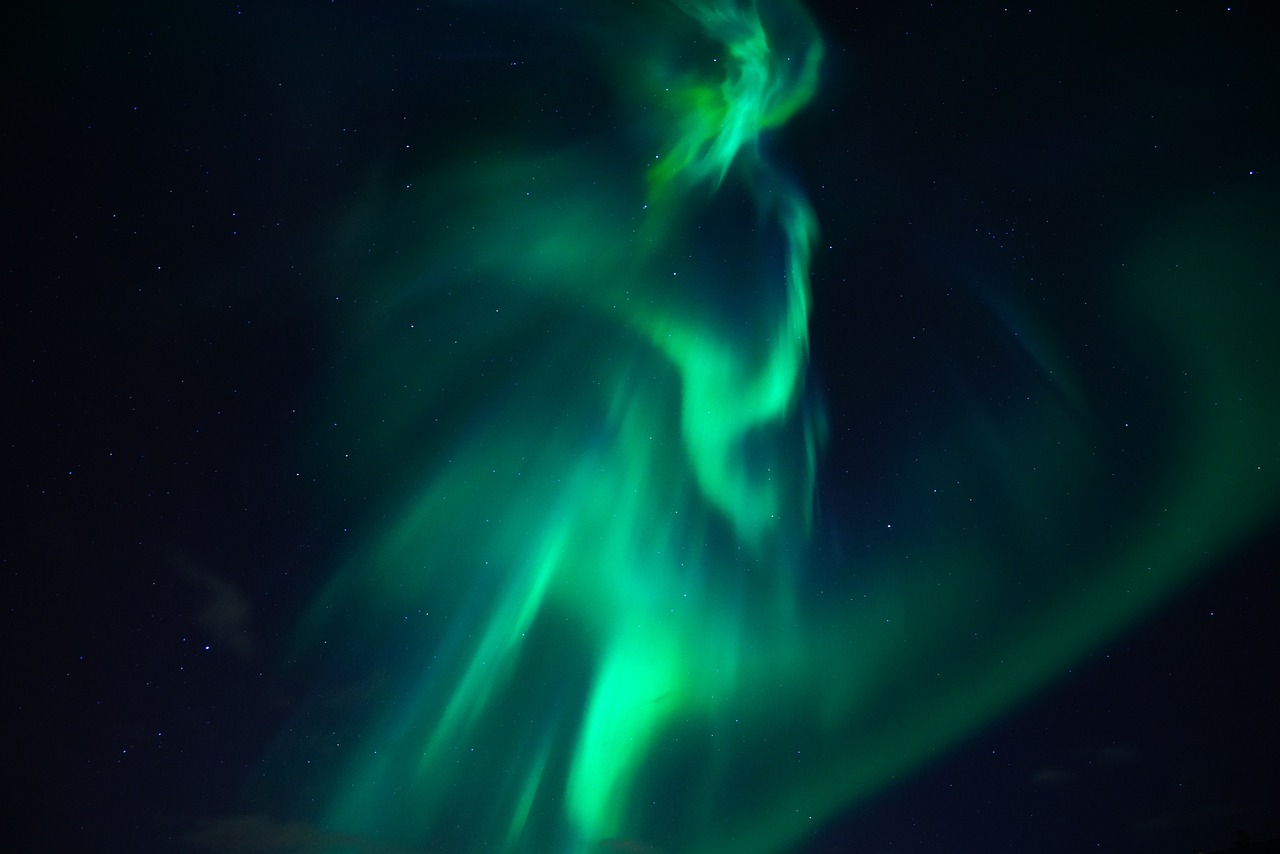Table of Contents
- The Polar Regions: Early Warning Systems for Climate Change
- The Arctic: Rapidly Changing Landscapes
- Melting Sea Ice
- Thawing Permafrost
- Altered Ecosystems
- The Antarctic: An Uncertain Future
- Rising Temperatures
- Altered Ocean Ecosystems
- Impact on Indigenous Communities
- Cultural Disruption
- Food Security
- Erosion and Relocation
- Resilience and Adaptation
- Traditional Knowledge
- Community-Led Initiatives
The polar regions, comprising the Arctic and Antarctic, are witnessing some of the most profound effects of climate change on our planet. These remote and seemingly pristine environments are experiencing rapid transformations that are deeply affecting the Indigenous communities, wildlife, and ecosystems that call them home. This article delves into the far-reaching impacts of climate change on polar communities, shedding light on the challenges they face and the resilience they demonstrate in the face of an ever-changing climate.
The polar regions, encompassing the Arctic and Antarctic, stand as the front lines in the battle against climate change, bearing witness to some of the most dramatic and consequential transformations on our planet. These vast, seemingly untouched landscapes, once thought of as impervious to change, are now undergoing rapid and profound alterations that reverberate far beyond their icy shores. Among those most affected by these changes are the Indigenous communities, wildlife, and delicate ecosystems that have thrived in these extreme environments for millennia. This article seeks to illuminate the far-reaching impacts of climate change on these polar communities, offering insights into the challenges they confront and the extraordinary resilience they display as they grapple with an ever-evolving climate.
At the heart of these transformations is the undeniable and accelerating warming of the polar regions. Temperature increases in the Arctic, in particular, have been more than twice the global average, leading to a host of cascading effects. Glacial retreat, sea ice loss, and permafrost thaw are just a few of the visible signs of change. These shifts have significant consequences for both polar ecosystems and human communities.
For Indigenous peoples of the Arctic, the changes are deeply personal and existential. Traditional subsistence practices, such as hunting, fishing, and reindeer herding, are intricately linked to the seasonal rhythms of the environment. However, warming temperatures have disrupted these rhythms, causing uncertainty in the timing and location of key food sources. This food insecurity is not just a matter of sustenance but a threat to cultural continuity, as these practices are woven into the very fabric of Indigenous identity.
Wildlife in the polar regions faces its own set of challenges. Iconic species such as polar bears, seals, and penguins rely on sea ice for hunting, resting, and breeding. As the ice retreats, their habitats shrink, making it harder to find food and raise their young. Additionally, ocean acidification, driven by increased carbon dioxide levels, affects marine life throughout the food chain, from tiny plankton to apex predators.
The impacts of climate change extend to the very landscapes themselves. Erosion, thawing permafrost, and more frequent and severe wildfires are reshaping the physical geography of the polar regions. These changes can lead to disruptions in transportation, infrastructure damage, and increased vulnerability to extreme weather events.
Despite these daunting challenges, polar communities have shown remarkable resilience and adaptability. Indigenous peoples are combining traditional knowledge with modern science to navigate changing conditions. They are experimenting with new hunting and fishing techniques, developing climate-resilient infrastructure, and advocating for policies that prioritize their unique needs.
Conservation efforts are also gaining momentum, with international collaborations aimed at protecting vulnerable ecosystems and species. Scientific research in the polar regions continues to expand our understanding of these environments, contributing to global efforts to mitigate climate change and preserve these vital regions.
In conclusion, the polar regions are both bellwethers for climate change and sanctuaries of cultural and ecological significance. The impacts of warming temperatures extend far beyond melting ice; they touch the lives of Indigenous communities, reshape ecosystems, and challenge the resilience of all who call these regions home. Yet, amidst these challenges, there is hope. Polar communities, scientists, and conservationists are working tirelessly to confront the changes and protect these invaluable landscapes, demonstrating the indomitable human spirit in the face of adversity and the unwavering commitment to safeguarding the polar regions for future generations.
To expand your knowledge on this subject, make sure to read on at this location: FAQ: Climate Change in the Polar Regions | Scripps Institution of …
The Polar Regions: Early Warning Systems for Climate Change
Polar regions are often referred to as the Earth’s “canaries in the coal mine” when it comes to climate change. The signs of global warming are more pronounced and severe in these regions, and they serve as crucial indicators of what the rest of the world may face in the future.
The moniker “canaries in the coal mine” aptly characterizes polar regions in the context of climate change. These remote, frozen expanses, situated at the Earth’s extremes, are exceptionally sensitive to shifts in climate. Consequently, the signs of global warming manifest more intensely and dramatically in these regions, offering profound insights into the challenges that could impact the entire planet in the not-so-distant future.
Accelerated Climate Change: Polar regions experience climate change at an accelerated rate compared to other parts of the world. Rising temperatures, melting ice sheets, and receding glaciers in the Arctic and Antarctic are stark reminders of the speed at which our planet is warming. These changes serve as an urgent wake-up call to the global community.
Threats to Ecosystems: Polar ecosystems are uniquely adapted to their frigid environments. The disruption caused by climate change puts immense pressure on these ecosystems, jeopardizing the survival of numerous species. Iconic creatures like polar bears, penguins, and Arctic seals face uncertain futures as their habitats shrink.
Global Sea Level Rise: The melting of polar ice caps has dire implications for sea levels worldwide. Rising sea levels threaten coastal communities, economies, and infrastructure across the globe. The severity of these impacts serves as a harbinger of the widespread consequences that other regions could experience in the face of sea level rise.
Feedback Loops: Polar regions are hotspots for feedback loops that amplify climate change. As ice melts, it exposes darker surfaces, such as ocean water or bare ground. These darker surfaces absorb more heat, further accelerating warming. The vicious cycle created by these feedback loops is a clear indication of the complex and interconnected nature of climate change.
Disruption of Global Weather Patterns: The warming of polar regions can disrupt global weather patterns. The polar jet stream, for example, plays a crucial role in weather systems around the world. Alterations in this atmospheric circulation can lead to more frequent and severe weather events, affecting agriculture, water resources, and human populations.
Loss of Cultural Heritage: Indigenous communities in polar regions are on the front lines of climate change. The erosion of their traditional lands and the challenges posed by shifting ice and ecosystems threaten their ways of life and cultural heritage. Their experiences serve as poignant reminders of the human cost of environmental degradation.
International Cooperation: Polar regions also offer a glimmer of hope through international cooperation. The recognition of their importance as early indicators of climate change has spurred collaborative efforts to study and address these issues. Agreements like the Paris Agreement underscore the global commitment to mitigating climate change.
In conclusion, the polar regions, often called the Earth’s “canaries in the coal mine,” are invaluable sentinels of climate change. The pronounced and severe signs of global warming in these regions serve as critical indicators of what the entire world may confront in the near future. Their plight underscores the urgent need for global action to mitigate climate change and protect the delicate balance of our planet’s ecosystems and climate systems.
Looking for more insights? You’ll find them right here in our extended coverage: Adapting to the Effects of Climate Change on Inuit Health – PMC
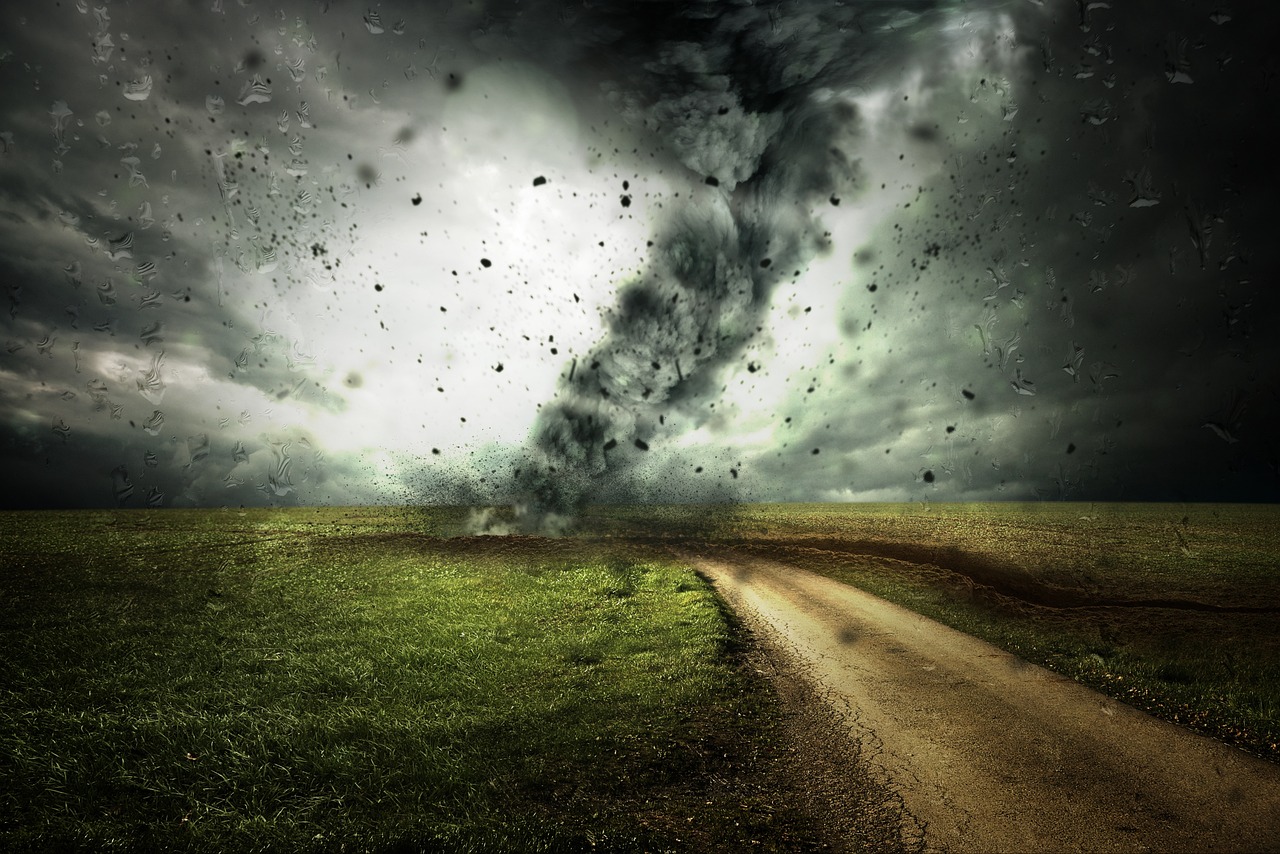
The Arctic: Rapidly Changing Landscapes
The Arctic is experiencing dramatic changes due to rising temperatures:
nullYou can also read more about this here: Climate change – WWF Arctic
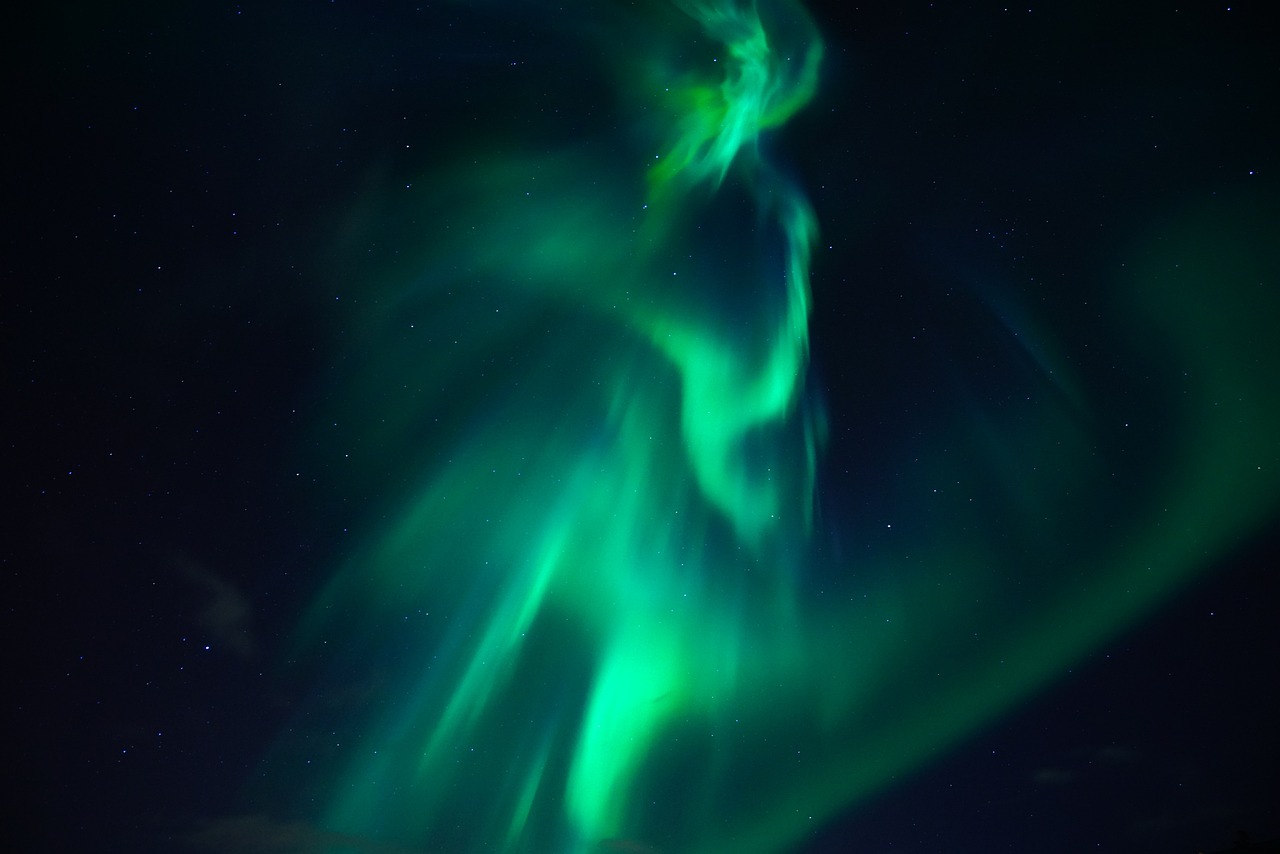
Melting Sea Ice
The Arctic sea ice, which has been a defining feature of the region for millennia, is rapidly diminishing. This has profound implications for Indigenous communities that rely on sea ice for transportation, hunting, and cultural practices.
The Arctic sea ice, a timeless presence that has shaped the Arctic for millennia, is undergoing a dramatic transformation as it rapidly diminishes. This pivotal change has far-reaching implications, particularly for the Indigenous communities whose lives are intricately intertwined with the frozen expanse of the Arctic Ocean.
For countless generations, sea ice has been the lifeblood of these communities. It’s been a frozen highway, connecting remote villages and providing essential transportation for hunting and gathering. During the long, frigid winters, it’s offered a platform for vital activities such as seal hunting, a tradition that sustains both bodies and spirits. Moreover, sea ice has been central to cultural practices, providing a stage for storytelling, festivals, and ceremonies that celebrate the deep bond between Indigenous peoples and their environment.
The rapid decline of Arctic sea ice presents a complex web of challenges for these communities. Reduced sea ice means more treacherous conditions for those who still rely on traditional hunting methods, as well as a decline in the availability of certain species. Navigating the shifting ice has become increasingly perilous, impacting not only the safety of hunters but also the continuity of their ancient traditions.
Additionally, the loss of sea ice is altering the ecosystems that Indigenous communities depend upon. It affects the distribution and behavior of marine life, disrupting established patterns of hunting and fishing. This forces communities to adapt, reevaluate their strategies, and contend with uncertainties that challenge their way of life.
Furthermore, the cultural significance of sea ice cannot be overstated. Its decline is not just an environmental issue but a deeply personal one for Indigenous communities. It threatens their spiritual connection to the land and the animals they depend on, jeopardizing the rich tapestry of traditions that have endured for millennia.
In response to these challenges, Indigenous communities are demonstrating remarkable resilience and adaptability. They are collaborating with scientists and governments to monitor changing conditions, while also pursuing initiatives that promote sustainable practices and cultural preservation. These efforts not only seek to address the immediate impacts of diminishing sea ice but also safeguard the cultural heritage and way of life that are intrinsic to the Arctic’s Indigenous peoples.
In conclusion, the rapid decline of Arctic sea ice is reshaping the lives and cultures of Indigenous communities in profound ways. As they confront the challenges of a changing environment, these communities exemplify the resilience and resourcefulness that have allowed them to thrive in the Arctic for generations. The story of sea ice in the Arctic is not just one of environmental change; it’s a testament to the enduring strength and adaptability of the human spirit in the face of unprecedented challenges.
Don’t stop here; you can continue your exploration by following this link for more details: Chapter 3: Polar regions — Special Report on the Ocean and …
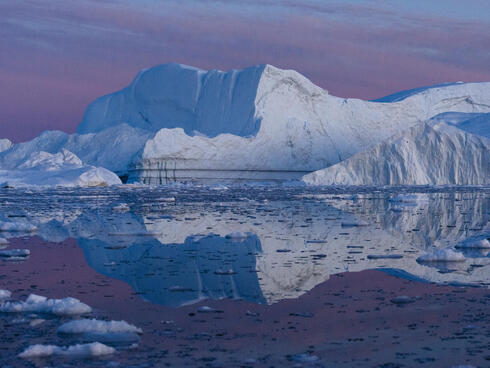
Thawing Permafrost
Thawing permafrost is causing infrastructure damage, as buildings and roads built on once-stable ground become unstable. It also releases greenhouse gases, further contributing to global warming.
The thawing permafrost in the polar regions is not only causing immediate infrastructure damage but also has far-reaching consequences that reverberate globally. Here’s a more in-depth look at this critical issue:
1. Infrastructure Damage: As permafrost, which has remained frozen for thousands of years, begins to thaw, the ground loses its stability. Buildings, roads, and other structures that were once securely anchored in the frozen ground become vulnerable to shifting and sinking. This damage not only poses a significant financial burden on communities but also disrupts daily life, transportation networks, and vital services.
2. Economic Costs: The economic costs of permafrost thaw are substantial. Repairing and reinforcing infrastructure in the polar regions can be prohibitively expensive, especially for small, remote communities. These financial burdens can strain local economies and divert resources from other critical needs, such as healthcare and education.
3. Greenhouse Gas Emissions: Thawing permafrost has a dual effect on greenhouse gas emissions. Firstly, it releases large quantities of methane, a potent greenhouse gas, as organic matter previously locked in the frozen ground begins to decompose in the warmer conditions. This contributes to a positive feedback loop, as increased greenhouse gas emissions lead to further warming and permafrost thaw.
4. Global Warming Amplification: The release of greenhouse gases from thawing permafrost has global implications. Methane, in particular, is several times more effective at trapping heat in the atmosphere than carbon dioxide over a short timeframe. Therefore, the increased emissions from permafrost thaw have the potential to accelerate global warming beyond what is accounted for in climate models.
5. Impacts on Local Communities: For Indigenous communities in the polar regions, the consequences of thawing permafrost are deeply personal. They witness the destruction of their homes, the eroding of their lands, and the disruption of traditional practices that rely on stable ground. These impacts further underscore the urgency of addressing climate change and the need for adaptation strategies.
6. Mitigation Efforts: Addressing the challenges posed by thawing permafrost requires a multifaceted approach. This includes reinforcing infrastructure, improving building practices to accommodate shifting ground, and developing early warning systems to alert communities to potential hazards. Additionally, global efforts to reduce greenhouse gas emissions are essential to curbing the cycle of permafrost thaw and its associated impacts.
In conclusion, the thawing of permafrost in the polar regions is a complex and multifaceted issue with wide-ranging consequences. Beyond immediate infrastructure damage, it serves as a stark reminder of the interconnectedness of climate change on both local and global scales. Efforts to mitigate these impacts must be collaborative, adaptive, and focused on addressing the root cause: the need to reduce greenhouse gas emissions and combat climate change to protect the fragile polar environments and the communities that call them home.
To expand your knowledge on this subject, make sure to read on at this location: Permafrost Thaw in a Warming World: The Arctic Institute’s …
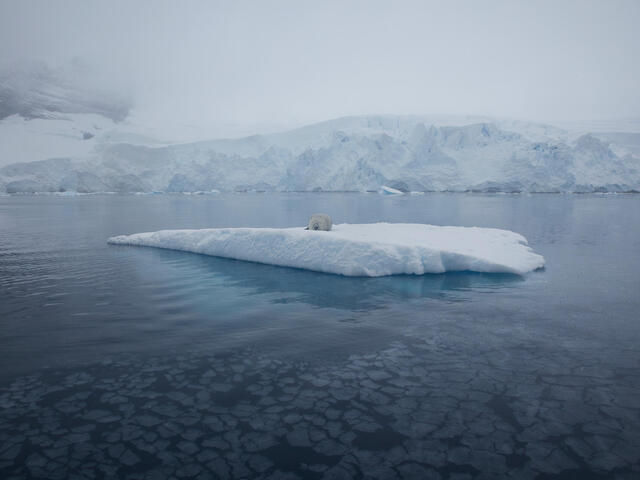
Altered Ecosystems
Shifts in temperature and ice cover are impacting Arctic wildlife, including polar bears, seals, and migratory birds. These changes disrupt traditional hunting practices and food security for Indigenous communities.
The Arctic, a region characterized by its extreme climate and unique ecosystems, is experiencing profound transformations driven by shifts in temperature and ice cover. These changes are having far-reaching consequences on the region’s wildlife, as well as on the traditional ways of life and food security of Indigenous communities who have thrived here for generations.
Polar Bears, Icons of the Arctic: Polar bears, perhaps the most iconic inhabitants of the Arctic, are facing unprecedented challenges. As the sea ice, their primary hunting platform, recedes at an alarming rate, polar bears are forced to travel greater distances in search of seals, their main food source. This puts tremendous pressure on these apex predators and threatens their survival. The changing ice conditions also impact polar bear dens, which are essential for the survival of cubs.
Seals and Migratory Birds: Seals, another vital component of the Arctic food web, are also affected by diminishing ice cover. They rely on sea ice to rest and give birth to their young. The loss of this critical habitat can disrupt seal populations, with cascading effects on the predators that depend on them, including polar bears and Indigenous hunters.
Migratory birds, such as the Arctic tern and snow goose, are also adjusting their migration patterns in response to shifting climate conditions. Changes in the timing of their arrivals can disrupt the traditional hunting calendar of Indigenous communities, who have relied on these migratory species for sustenance for centuries.
Disrupted Traditional Hunting Practices: The disruptions in Arctic ecosystems have profound implications for Indigenous communities that depend on hunting and fishing for their subsistence. Traditional hunting practices, deeply rooted in cultural heritage and a sustainable relationship with the land, are facing challenges. As wildlife patterns change, Indigenous hunters must adapt, sometimes traveling longer distances or exploring new territories to secure their harvest.
Food Security Concerns: Food security, a pressing issue in many Arctic communities, is exacerbated by these environmental changes. Dependence on traditional foods, such as seal and whale blubber, is a crucial part of Indigenous diets. However, variations in the availability of these foods due to shifting wildlife populations and changing ice conditions can lead to food shortages and increased reliance on imported, often expensive, store-bought goods.
Adaptation and Resilience: In the face of these challenges, Indigenous communities are demonstrating remarkable resilience and adaptability. They are combining traditional knowledge with modern science to monitor and respond to changing environmental conditions. Collaborations with researchers and government agencies are helping to inform conservation efforts and ensure the sustainable management of Arctic resources.
In conclusion, the profound shifts in Arctic temperature and ice cover are rippling through the delicate web of Arctic ecosystems, affecting iconic wildlife species and the livelihoods of Indigenous communities. These changes challenge the traditional hunting practices and food security that have sustained Arctic peoples for millennia. However, as they confront these challenges, Arctic communities are drawing on their deep knowledge of the land and their capacity for innovation to navigate an uncertain future, emphasizing the need for global collaboration to mitigate the impacts of climate change on this fragile region and its inhabitants.
Looking for more insights? You’ll find them right here in our extended coverage: Environmental Impact: Concept, Consequences, Measurement – PMC

The Antarctic: An Uncertain Future
While the Antarctic continent may seem distant and unaffected by climate change, it faces its own set of challenges:
nullIf you’d like to dive deeper into this subject, there’s more to discover on this page: Chapter 3: Polar regions — Special Report on the Ocean and …

Rising Temperatures
Even a small rise in temperatures can have significant impacts in Antarctica. Warming oceans are causing the disintegration of ice shelves, contributing to sea-level rise.
Antarctica, often perceived as a frozen, immutable continent, is increasingly revealing its vulnerability to the warming trends of our planet. Even a seemingly modest increase in temperatures can set off a chain reaction of consequences with far-reaching impacts.
One of the most striking manifestations of this vulnerability is the disintegration of ice shelves along Antarctica’s coastlines. These colossal floating extensions of the continental ice sheets serve as critical buttresses, holding back the flow of land-based ice into the ocean. However, as temperatures rise, the undersides of these ice shelves are exposed to warmer ocean waters. This warmer water erodes the ice from below, weakening the shelves and causing them to fracture and collapse.
The disintegration of ice shelves is concerning for several reasons. First and foremost, it contributes to sea-level rise. When ice shelves break apart, they unleash vast amounts of land-based ice into the ocean, directly adding to the volume of seawater. This phenomenon is a major driver of global sea-level rise, with implications for coastal communities worldwide.
Furthermore, the loss of ice shelves can accelerate the flow of glaciers and ice streams from the continent’s interior into the ocean. This contributes to a feedback loop, where the reduction of ice shelves leads to more ice entering the ocean, further exacerbating sea-level rise. In some regions, this process has already accelerated, with glaciers flowing into the sea at an increasingly rapid pace.
The consequences of sea-level rise extend beyond just coastal inundation. Rising seas can result in coastal erosion, increased flooding during storms, and the salinization of freshwater sources, which poses risks to both human populations and ecosystems. In Antarctica itself, these changes can disrupt the delicate balance of polar ecosystems and have cascading effects on wildlife.
Moreover, the warming of Antarctica’s oceans has implications for marine ecosystems. Shifts in water temperature can affect the distribution of species, impacting the delicate web of life in these frigid waters. This, in turn, can have consequences for fisheries and the overall health of marine ecosystems.
In conclusion, the seemingly small rise in temperatures in Antarctica is revealing profound and far-reaching impacts. The disintegration of ice shelves, driven by warming oceans, is not only a key contributor to global sea-level rise but also a harbinger of the broader consequences of climate change. As Antarctica continues to respond to our changing climate, understanding and mitigating these impacts are of paramount importance for the future of our planet.
For a comprehensive look at this subject, we invite you to read more on this dedicated page: Climate Change Facts & FAQs | The Nature Conservancy

Altered Ocean Ecosystems
Warmer waters and changing ocean currents are affecting marine life in the Southern Ocean, potentially impacting the species that sustain the food web.
The Southern Ocean, a vast expanse of pristine waters surrounding Antarctica, is facing a profound transformation as a result of warming temperatures and shifting ocean currents. These changes have a ripple effect that extends throughout the entire marine ecosystem, with the potential to disrupt the delicate balance that sustains the region’s unique and diverse marine life.
One of the most immediate and visible impacts is the alteration of marine species’ distribution patterns. As the waters warm, some species of fish and krill, which form the foundation of the Southern Ocean’s food web, are moving southward in search of cooler habitats. This migration can disrupt established feeding and breeding patterns for the animals that depend on them, including penguins, seals, and whales.
The effects of changing ocean currents are equally significant. These currents play a crucial role in transporting nutrients and food throughout the Southern Ocean. Alterations in their flow can disrupt the distribution of plankton, the primary food source for many marine species. Consequently, this can lead to food scarcity in some regions, affecting the reproduction and survival of numerous marine creatures.
Ocean acidification, driven by increased carbon dioxide absorption, is another threat to the Southern Ocean’s marine life. The more acidic waters can harm the shells and skeletons of organisms like mollusks and corals, with far-reaching consequences for the entire food web.
These changes are not only ecological but also socio-economic, as they have implications for fisheries and the communities that rely on them. For instance, altered fish populations can impact the fishing industry, which plays a crucial role in the livelihoods of many coastal communities in the Southern Ocean region.
Despite these challenges, scientists, conservationists, and policymakers are working diligently to better understand and mitigate the impacts of climate change on the Southern Ocean. Monitoring programs, such as those tracking the movement of marine species, provide valuable data to inform conservation efforts and the establishment of marine protected areas.
The Southern Ocean’s future hangs in the balance as it grapples with the consequences of a warming world. It serves as a stark reminder of the interconnectedness of our planet’s ecosystems and the far-reaching consequences of climate change. As we navigate these challenges, the preservation of the Southern Ocean’s unique marine life stands as a testament to our commitment to protecting Earth’s most pristine and vulnerable environments.
If you’d like to dive deeper into this subject, there’s more to discover on this page: Impacts of Climate Change on Marine Organisms and Ecosystems …
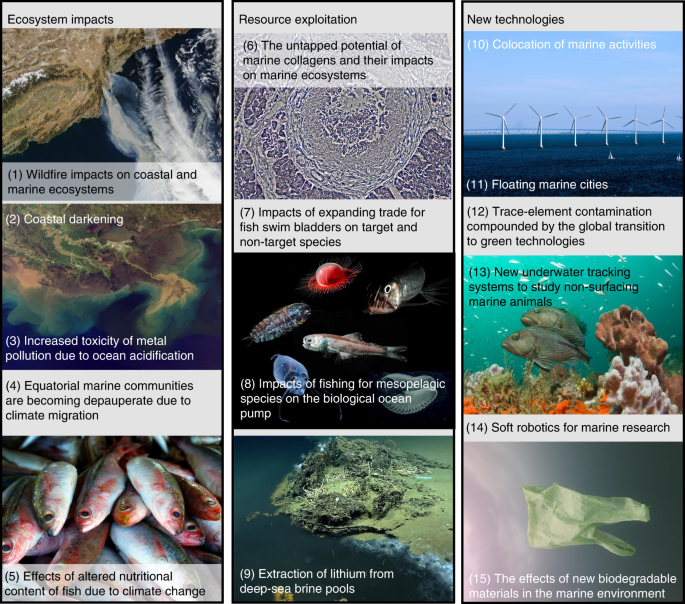
Impact on Indigenous Communities
Indigenous communities in the polar regions are on the front lines of climate change:
Indigenous communities in the polar regions are undeniably on the front lines of climate change, and their experiences serve as a poignant and urgent reminder of the global environmental crisis that confronts us all. These communities, whose lives have been intricately intertwined with the Arctic and Antarctic landscapes for countless generations, are witnessing the profound and rapid shifts in their environments, ecosystems, and traditional ways of life.
One of the most visible impacts of climate change in these regions is the accelerating rate of ice melt. In the Arctic, the once-sturdy sea ice that has long been a vital part of indigenous subsistence hunting and travel is diminishing at an alarming pace. This directly affects the accessibility of hunting grounds, the safety of travel routes, and the availability of marine life crucial for food security. Similarly, in Antarctica, the disintegration of massive ice shelves and the retreat of glaciers are fundamentally altering the surrounding ecosystems and ocean currents, impacting indigenous fishing practices and wildlife.
Rising temperatures have also led to unpredictable and extreme weather events. Indigenous communities in the polar regions are facing increasingly severe storms, unpredictable ice conditions, and thawing permafrost. These changes disrupt daily life, pose safety risks, and threaten infrastructure.
Additionally, the warming of the polar regions has triggered ecological shifts. New species are encroaching on traditional hunting and fishing grounds, while indigenous flora and fauna are facing displacement and extinction. This disruption of the delicate balance of nature affects not only the subsistence practices of these communities but also their cultural and spiritual connections to the land and wildlife.
Importantly, the loss of sea ice and melting glaciers are contributing to rising sea levels globally, which threaten not only the indigenous communities but also low-lying coastal areas around the world. The implications of these changes reach far beyond the polar regions, underscoring the interconnectedness of our planet’s climate systems.
Despite these formidable challenges, indigenous communities in the polar regions are not passive victims of climate change. They are active participants in climate science, adaptation, and mitigation efforts. Their traditional knowledge, passed down through generations, provides invaluable insights into how to navigate and thrive in changing environments. Indigenous voices are increasingly heard on the global stage, advocating for climate action and the preservation of their homelands.
In conclusion, indigenous communities in the polar regions are at the forefront of climate change, experiencing its impacts firsthand. Their experiences highlight the urgency of global climate action and the need to protect these unique environments and cultures. As we collectively address the challenges of climate change, it is imperative that we listen to and learn from the wisdom of these communities, recognizing their invaluable contributions to our shared efforts to safeguard our planet for future generations.
Don’t stop here; you can continue your exploration by following this link for more details: International Climate Impacts | Climate Change Impacts | US EPA

Cultural Disruption
Rapid environmental changes challenge traditional practices, making it difficult for Indigenous communities to maintain their way of life. Loss of sea ice, unpredictable weather patterns, and disrupted wildlife migration all have cultural ramifications.
nullIf you’d like to dive deeper into this subject, there’s more to discover on this page: Infrastructure and Community Resilience in the Changing Arctic …
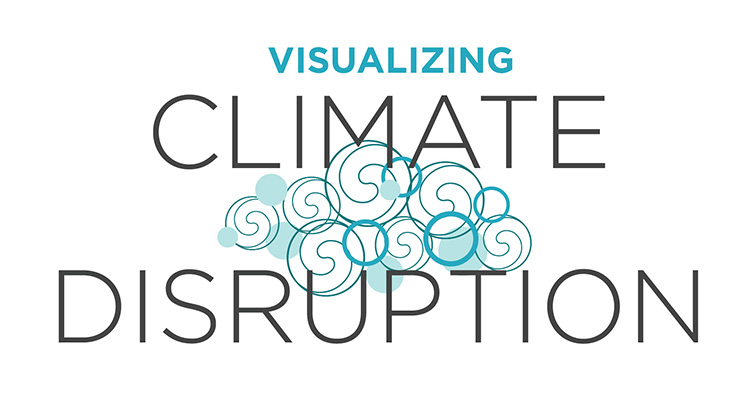
Food Security
Indigenous communities rely on hunting, fishing, and herding for sustenance. Climate change disrupts these activities, leading to food insecurity.
Indigenous communities have long depended on their deep connection with the land and water for their sustenance. Hunting, fishing, and herding have been not just traditional practices but a way of life, passed down through generations. However, the specter of climate change now looms large, casting a shadow over these time-honored livelihoods and causing widespread food insecurity among these communities.
The impact of climate change on hunting and fishing is profound. As temperatures rise and ecosystems shift, traditional hunting grounds and fishing waters become increasingly unpredictable. Animal migration patterns are altered, making it harder for hunters to locate game. Fish stocks dwindle or move to new areas, leaving fishermen with uncertain catches. The delicate balance between humans and the environment is disrupted, and the reliable sources of food that these communities have relied upon for centuries become increasingly unreliable.
Furthermore, the effects of climate change are not limited to hunting and fishing. Indigenous herding traditions, often adapted to the unique challenges of harsh Arctic or mountainous environments, are also facing disruptions. Changes in temperature and precipitation patterns affect the availability of grazing lands and the health of the herds. These challenges compound the difficulties faced by communities already adapting to a rapidly changing world.
Food insecurity is a sobering reality for many Indigenous communities as a result of these climate-induced disruptions. Traditional foods, rich in nutrients and culturally significant, are becoming scarcer. This scarcity not only affects physical health but also takes a toll on the mental and emotional well-being of these communities, as the loss of cultural practices erodes their sense of identity and connection to the land.
In the face of these challenges, Indigenous communities are demonstrating resilience and adaptability. They are drawing upon their traditional knowledge and seeking innovative solutions to mitigate the impact of climate change. Collaborative efforts with governments and non-governmental organizations are underway to develop sustainable resource management practices, revitalize traditional agriculture, and address food insecurity.
However, addressing the root causes of climate change remains a critical part of the solution. Reductions in greenhouse gas emissions, along with global efforts to combat climate change, are essential to safeguard the traditional ways of life and the food security of Indigenous communities. It is a testament to the enduring spirit of these communities that, even in the face of such adversity, they continue to fight to protect their heritage, culture, and the future of generations to come.
Should you desire more in-depth information, it’s available for your perusal on this page: Climate Change | United Nations For Indigenous Peoples

Erosion and Relocation
Rising sea levels and coastal erosion force some Indigenous communities to consider relocation, a complex and often painful process.
The looming specter of rising sea levels and relentless coastal erosion presents an existential challenge that some Indigenous communities find themselves grappling with. For these communities, the prospect of relocation becomes a necessary but intricate and often heart-wrenching process.
Sea-level rise, largely attributed to climate change, poses an imminent threat to coastal communities that have lived in harmony with their environments for generations. The encroachment of the sea into their ancestral lands not only endangers their homes but also erodes the very foundation of their cultural identity, which is intrinsically tied to the land and water. As coastlines shrink and shorelines vanish, these communities must confront the painful reality of having to leave behind the places that hold their history, stories, and sacred sites.
Relocation, however, is far from a straightforward solution. It involves complex logistical, legal, and emotional challenges. Identifying new lands that are both culturally and environmentally suitable can be a daunting task. Negotiating land rights, securing funding, and ensuring the preservation of cultural heritage during the move are equally formidable hurdles.
Moreover, relocation often means leaving behind the homes where generations of families have lived and the graves of ancestors. The emotional toll is profound, as communities face the disruption of their social fabric and the loss of their tangible and intangible heritage.
Despite these formidable obstacles, Indigenous communities facing relocation display remarkable resilience and adaptability. They seek to strike a delicate balance between honoring their traditions and embracing the necessity of change. Some communities are actively engaged in climate adaptation and mitigation efforts, such as building resilient infrastructure or participating in land restoration projects.
Additionally, they work tirelessly to ensure that their cultural heritage is not lost in the process. Efforts to document oral histories, preserve traditional knowledge, and protect sacred sites play a pivotal role in safeguarding their identity during the relocation journey.
The plight of Indigenous communities facing relocation serves as a stark reminder of the urgent need for global action to combat climate change and its devastating consequences. It also highlights the indomitable spirit of these communities, who, despite the heartache and challenges, continue to persevere and adapt, carrying with them the hope of preserving their cultural legacies and a sustainable future for their people.
Should you desire more in-depth information, it’s available for your perusal on this page: Chapter 4: Sea Level Rise and Implications for Low-Lying Islands …
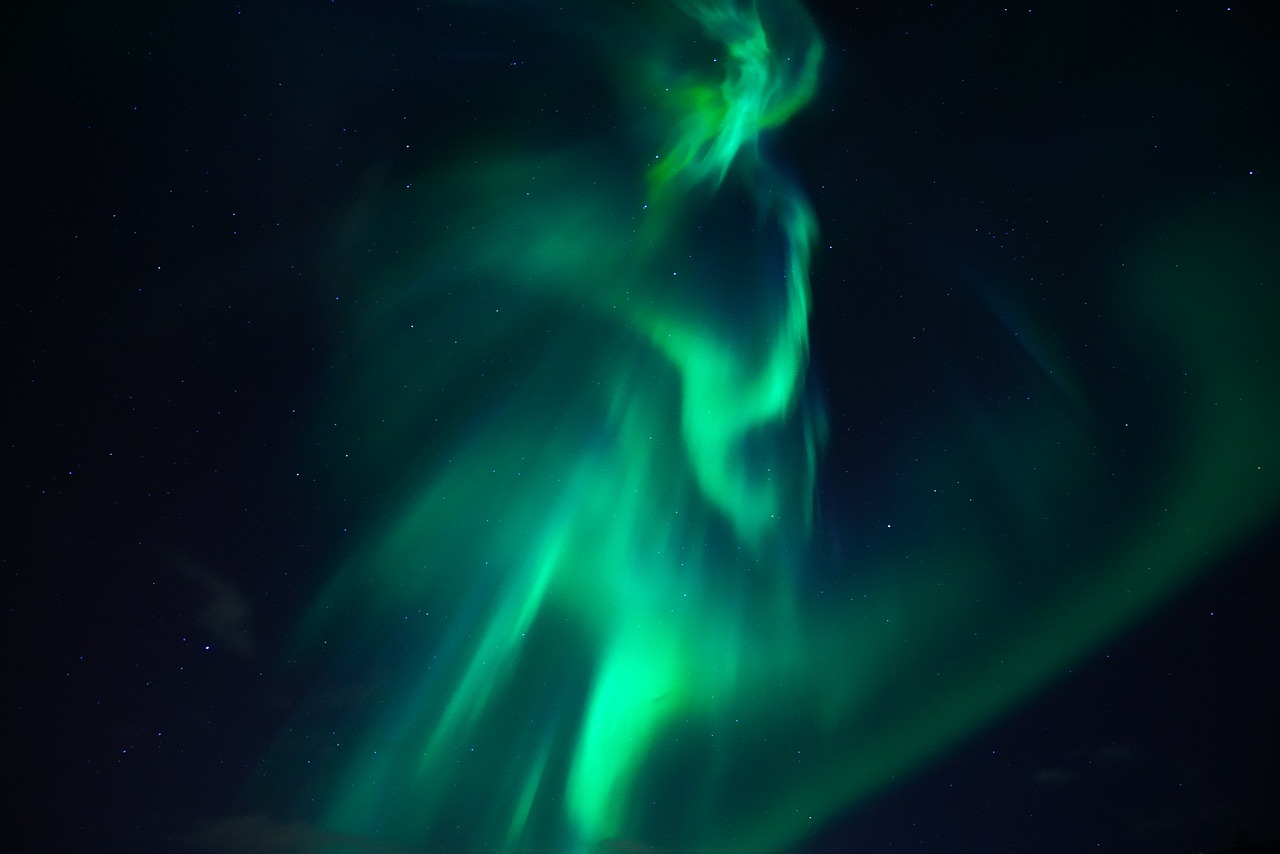
Resilience and Adaptation
Despite the challenges, polar communities are demonstrating remarkable resilience and adaptability:
Despite the formidable challenges posed by the harsh polar environments, polar communities are continually demonstrating remarkable resilience and adaptability, showcasing their unwavering determination to thrive in some of the most extreme conditions on our planet.
Resilience in polar communities takes many forms. It’s the resilience of indigenous peoples who have inhabited these regions for millennia, navigating the frigid winters, icy landscapes, and remote locales with remarkable ingenuity and resourcefulness. It’s the resilience of scientists and researchers who endure the extreme cold and isolation to conduct vital climate and environmental studies, contributing crucial data to our understanding of global climate change.
In the face of unpredictable weather patterns, polar communities have honed their survival skills and developed innovative solutions for housing, transportation, and food production. Traditional knowledge, passed down through generations, has played a pivotal role in helping these communities adapt to the ever-changing polar climates. It’s a testament to human ingenuity and the power of community bonds that they continue to flourish despite the formidable challenges.
Adaptability is another hallmark of polar communities. They recognize that the world around them is evolving, and they’re proactive in adjusting to these shifts. As melting ice and shifting ecosystems impact traditional hunting and fishing practices, many indigenous communities are diversifying their livelihoods. They explore opportunities in tourism, art, and sustainable resource management, striving to maintain their cultural identity while embracing new economic pathways.
Researchers and conservationists are also adapting to the realities of polar change. They are developing cutting-edge technologies to monitor ice melt, study wildlife, and assess the impacts of climate change. Additionally, international collaborations are expanding our collective knowledge about these regions, fostering cooperation on climate mitigation and conservation efforts.
In both the Arctic and Antarctic, polar communities and the global scientific community are facing the pressing issue of climate change head-on. They are advocating for policy changes, raising awareness about the consequences of global warming, and working tirelessly to reduce the carbon footprint of their own activities.
In summary, the resilience and adaptability demonstrated by polar communities are a source of inspiration and hope. They remind us that, even in the face of seemingly insurmountable challenges, the human spirit can persevere and thrive. These communities, whether indigenous or scientific, serve as beacons of determination, teaching us that with creativity, collaboration, and a deep respect for the environment, we can confront the most complex problems and build a more sustainable future for polar regions and our planet as a whole.
Additionally, you can find further information on this topic by visiting this page: Arctic Peoples | Arctic Council
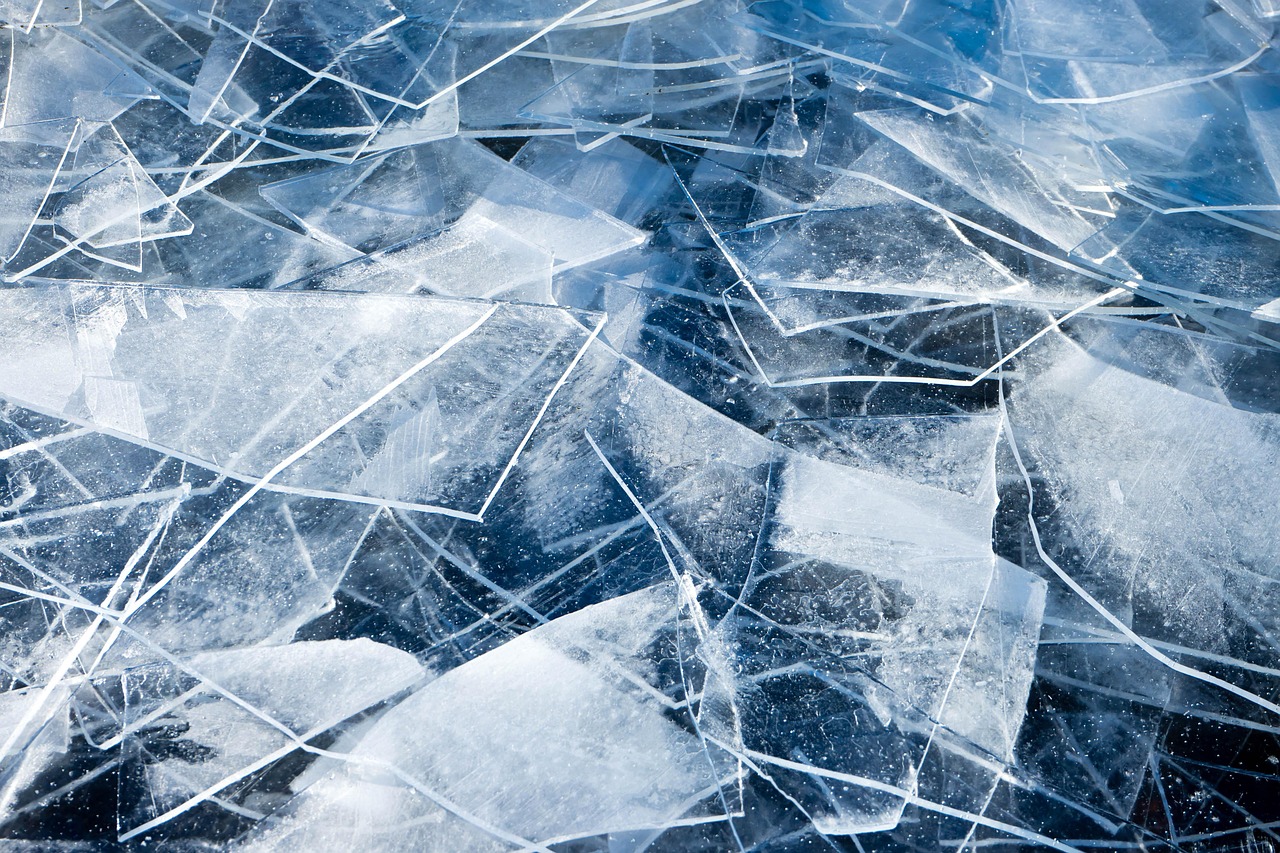
Traditional Knowledge
Indigenous knowledge, passed down through generations, plays a crucial role in adapting to changing conditions. This knowledge helps communities navigate shifting ice and adapt hunting and fishing practices.
nullFor additional details, consider exploring the related content available here Arctic Peoples | Arctic Council

Community-Led Initiatives
Indigenous communities are leading local efforts to mitigate the impacts of climate change. They are developing sustainable practices, advocating for policy changes, and collaborating with researchers and governments.
Indigenous communities are at the forefront of the global fight against climate change, serving as inspiring examples of local resilience and environmental stewardship. Their commitment to mitigating the impacts of climate change is not only a testament to their deep connection to the land but also a practical response to the pressing challenges they face.
1. Sustainable Practices: Indigenous communities are champions of sustainable practices that have been honed over centuries. They understand the delicate balance between human activity and the environment. Traditional knowledge, passed down through generations, offers valuable insights into sustainable agriculture, forestry, hunting, and fishing. These practices are not only ecologically sound but also culturally significant.
2. Guardians of Biodiversity: Indigenous lands often harbor rich biodiversity, which is vital for global ecological health. Many Indigenous communities actively protect and conserve their territories, acting as guardians of unique ecosystems. Their efforts contribute to the preservation of endangered species and the overall health of the planet.
3. Advocacy and Policy Change: Indigenous leaders are powerful advocates for policy changes at local, national, and international levels. They leverage their voices and knowledge to push for policies that prioritize environmental protection, carbon reduction, and the recognition of Indigenous land rights. Their advocacy has led to important shifts in environmental policy worldwide.
4. Climate Resilience: Indigenous communities are adapting to the changing climate by enhancing their resilience. They are implementing innovative solutions such as climate-smart agriculture, water management techniques, and sustainable energy practices. These measures not only protect their communities but also serve as models for broader climate adaptation efforts.
5. Collaborative Research: Indigenous communities collaborate with researchers and governments to contribute to our understanding of climate change and its impacts. These collaborations are based on mutual respect and the recognition of Indigenous knowledge as a valuable source of information. Indigenous-led research projects shed light on local climate trends, adaptation strategies, and the effects of climate change on traditional ways of life.
6. Cultural Preservation: Climate change poses a unique threat to Indigenous cultures, as it often disrupts traditional practices and territories. Indigenous communities are fiercely committed to preserving their cultural heritage, and this includes adapting rituals, ceremonies, and practices to the changing environment. Their cultural resilience is intertwined with their environmental resilience.
7. Global Inspiration: Indigenous efforts to combat climate change serve as an inspiration to the global community. Their holistic approach, grounded in respect for the land and a deep understanding of natural systems, offers valuable lessons for sustainability and resilience. Indigenous wisdom reminds the world that solutions to climate change must respect and work with nature, rather than against it.
In conclusion, Indigenous communities are not just victims of climate change; they are active leaders in the fight against it. Their sustainable practices, advocacy, resilience, and collaboration with the broader world demonstrate that addressing climate change is a collective effort that draws strength from the wisdom of the past and the innovation of the present. As we navigate the challenges of a changing climate, the world has much to learn from the Indigenous communities leading the way.
For a comprehensive look at this subject, we invite you to read more on this dedicated page: The need for community-led, integrated and innovative monitoring …

Climate change is dramatically altering the polar regions, affecting not only their fragile ecosystems but also the Indigenous communities that have thrived there for centuries. These communities are not passive victims; they are active agents of change, working to preserve their cultures, traditions, and environments in the face of unprecedented challenges. As the world grapples with the consequences of climate change, the stories of resilience and adaptation in the polar regions serve as powerful reminders of the urgency of addressing this global crisis and protecting the planet for future generations.
Climate change is indeed unleashing profound and unsettling transformations in the polar regions, echoing its impacts across the globe. These shifts are not limited to the natural world; they are reshaping the very essence of life for the Indigenous communities whose histories have been intertwined with these icy landscapes for generations.
Yet, it’s crucial to recognize that the Indigenous communities of the polar regions are not passive victims resigned to their fate. They are dynamic and determined agents of change, standing at the forefront of efforts to preserve their cultures, traditions, and the precious environments that sustain their ways of life. Their stories of resilience and adaptation serve as a beacon of hope and inspiration in an era when the consequences of climate change are felt by all.
One of the most remarkable aspects of Indigenous resilience is their ability to blend ancient wisdom with modern innovation. Indigenous knowledge, passed down through generations, serves as an invaluable resource in understanding the shifting patterns of the polar world. This wisdom informs not only their cultural practices but also innovative strategies for adaptation.
Indigenous communities are finding ingenious ways to adapt to the rapidly changing environment. In Alaska, for example, some communities have developed mobile greenhouses that can be moved to follow temperature shifts, allowing them to continue traditional plant cultivation. In the Arctic, new techniques for building sea ice platforms are being explored to maintain access to hunting and fishing grounds.
Additionally, Indigenous peoples are leading efforts to document and protect their languages, cultures, and traditional practices. They are creating digital archives, oral history projects, and language immersion programs, ensuring that their heritage remains vibrant and accessible to future generations. In doing so, they are not only preserving their own identity but also enriching the global tapestry of human diversity.
Moreover, these communities are active advocates for climate action and environmental stewardship. They play a pivotal role in global discussions about climate change, sharing their experiences and knowledge with the world. Their voices remind us that the impacts of climate change are not abstract statistics but real and tangible challenges faced by communities with deep historical connections to the land.
As the world grapples with the consequences of climate change, the stories of resilience and adaptation in the polar regions stand as powerful reminders of the urgency of addressing this global crisis. They underscore the importance of collective action to mitigate the impacts of climate change and protect the planet for future generations. The determination, innovation, and cultural pride demonstrated by Indigenous communities offer valuable lessons and inspiration for all as we strive to build a more sustainable and resilient world.
To delve further into this matter, we encourage you to check out the additional resources provided here: Polar Bear | Species | WWF
More links
You can also read more about this here: Six ways loss of Arctic ice impacts everyone | Pages | WWF
